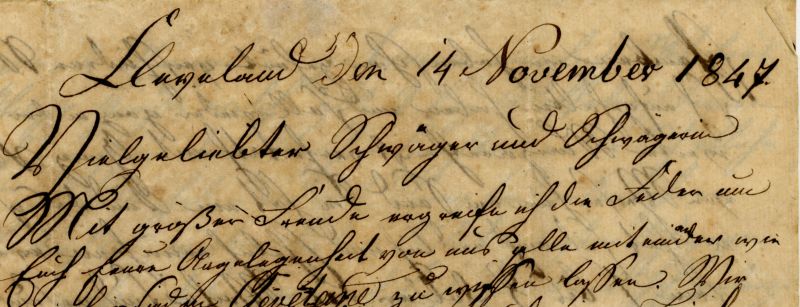My relatives in Freinsheim discovered a packet of old letters, from early in the 1840s up into the 20th century, from relatives who emigrated from the Rhineland-Palatinate to Cleveland, Ohio. They’re written not only in German, but in Alte Deutsche Schrift (Old German Script), or Kurrentschrift, based on medieval cursive.
 Here’s a sample of the handwriting, written by Johann Rapparlie. This snippet says:
Here’s a sample of the handwriting, written by Johann Rapparlie. This snippet says:
Cleveland on the 14th November, 1847
Much loved brother-in-law and sister-in-law,
With great joy I pick up the pen to let you know about our matters how all of us are here amongst each other in Cleveland.
Sütterlin script is named after the graphic artist who standardized the Old German Script, but that did not happen until 1911. Before then, variants were the rule, not the exception. The cursive is a problem to anyone lucky enough to possess old letters, church records, land deeds, and so on, hand-written in German.
It’s also a problem for those of us researching German ancestry, because signatures of Germans on, say, marriage documents, may have been typed up by people who knew only the English alphabet. Here’s just one example. I have had great difficulty finding my ancestor George Scheuermann. It turns out the Old German Script is one source of the problem. The letter “e”, in Old German Script, looks like this: ![]() which strongly resembles the English cursive “n”.
which strongly resembles the English cursive “n”.
This revelation occurred to me on a recent visit to the Ohio Historical Society archives in Columbus. In the typed-up book of Cuyahoga marriages in the 1840s and 1850s, I found him at last.
Fortunately, like most challenges of the 21st century, there is help on the web.
Here You Can Learn Suetterlin
Write Your Name in Suetterlin


4 responses to “Sütterlin – Old German Script”